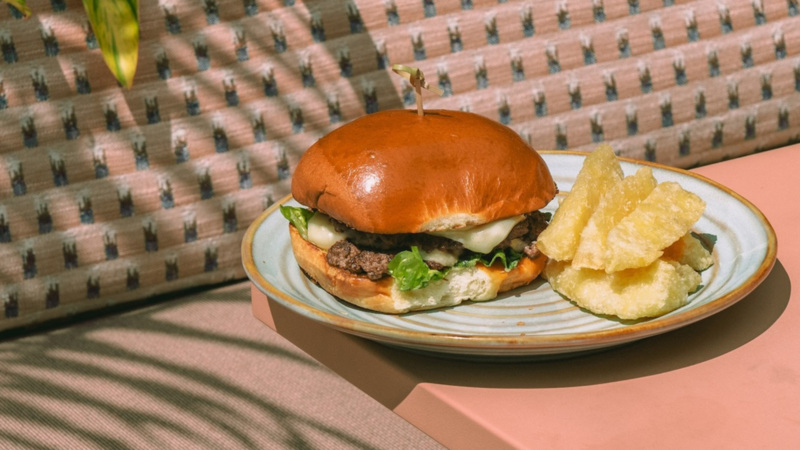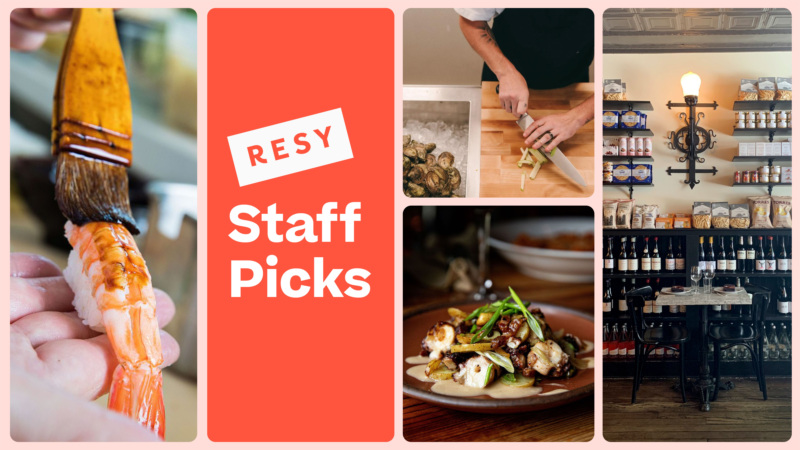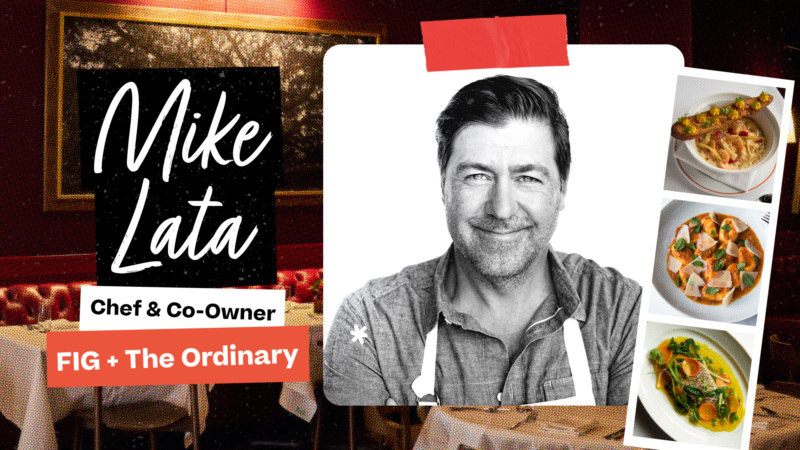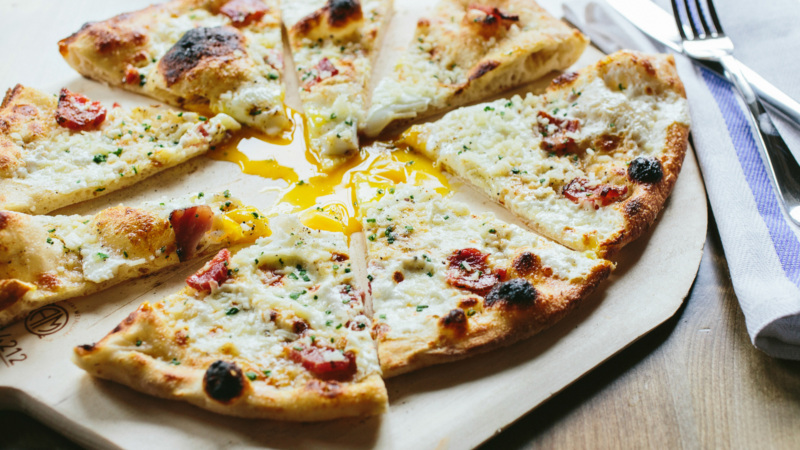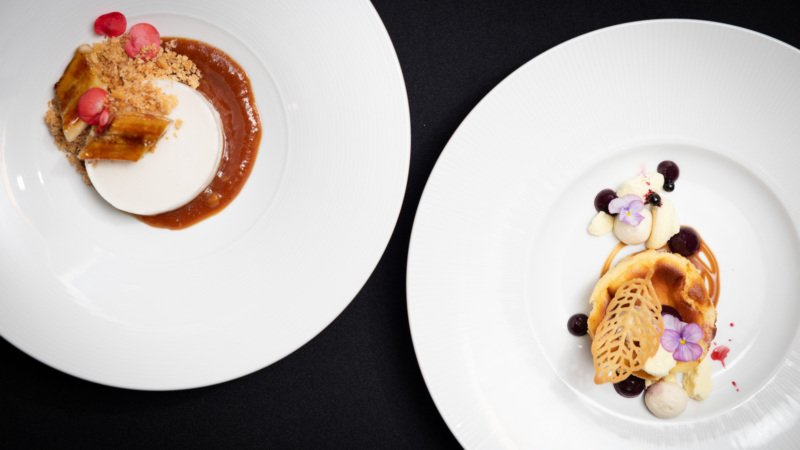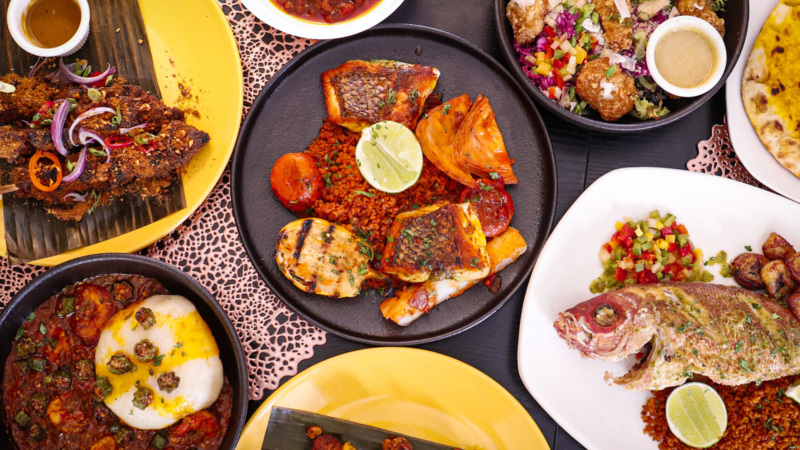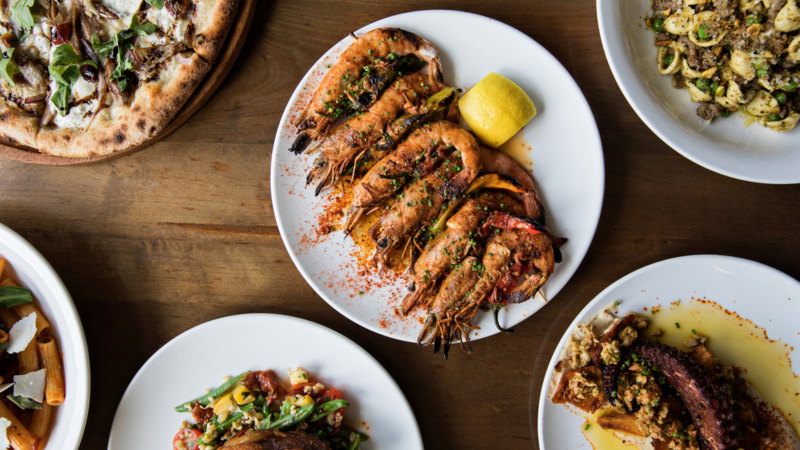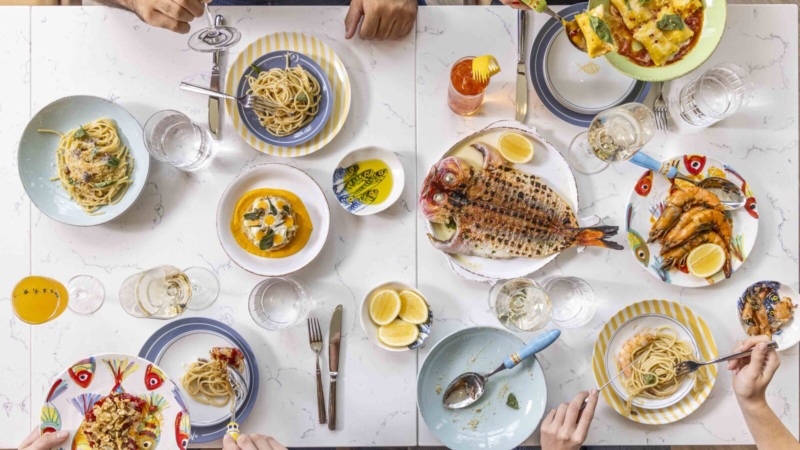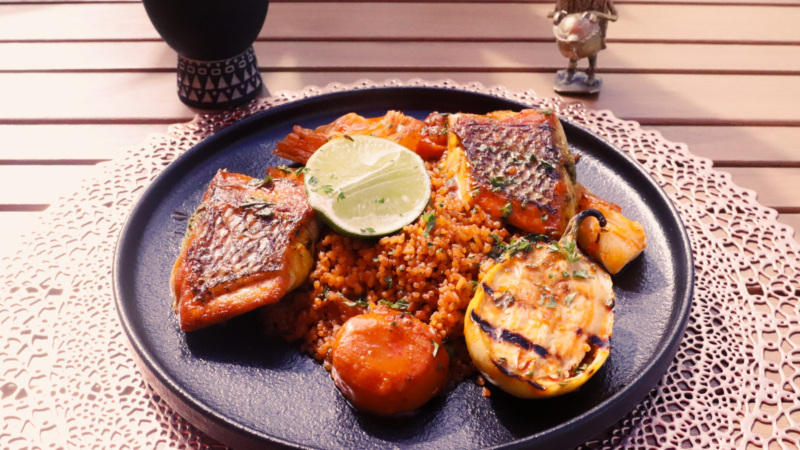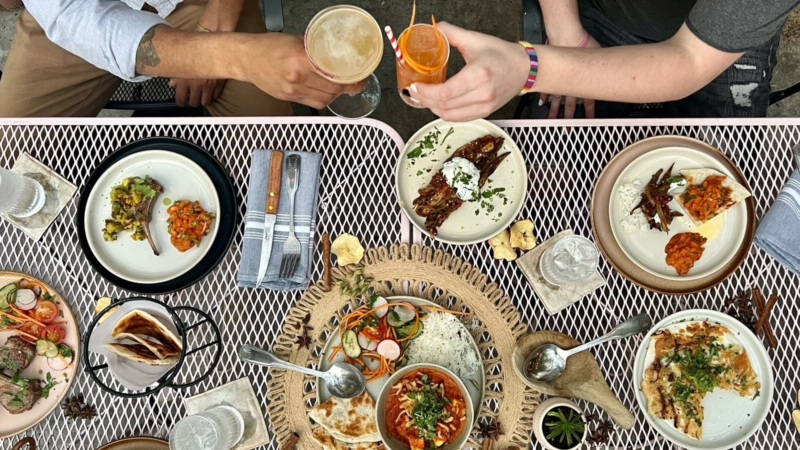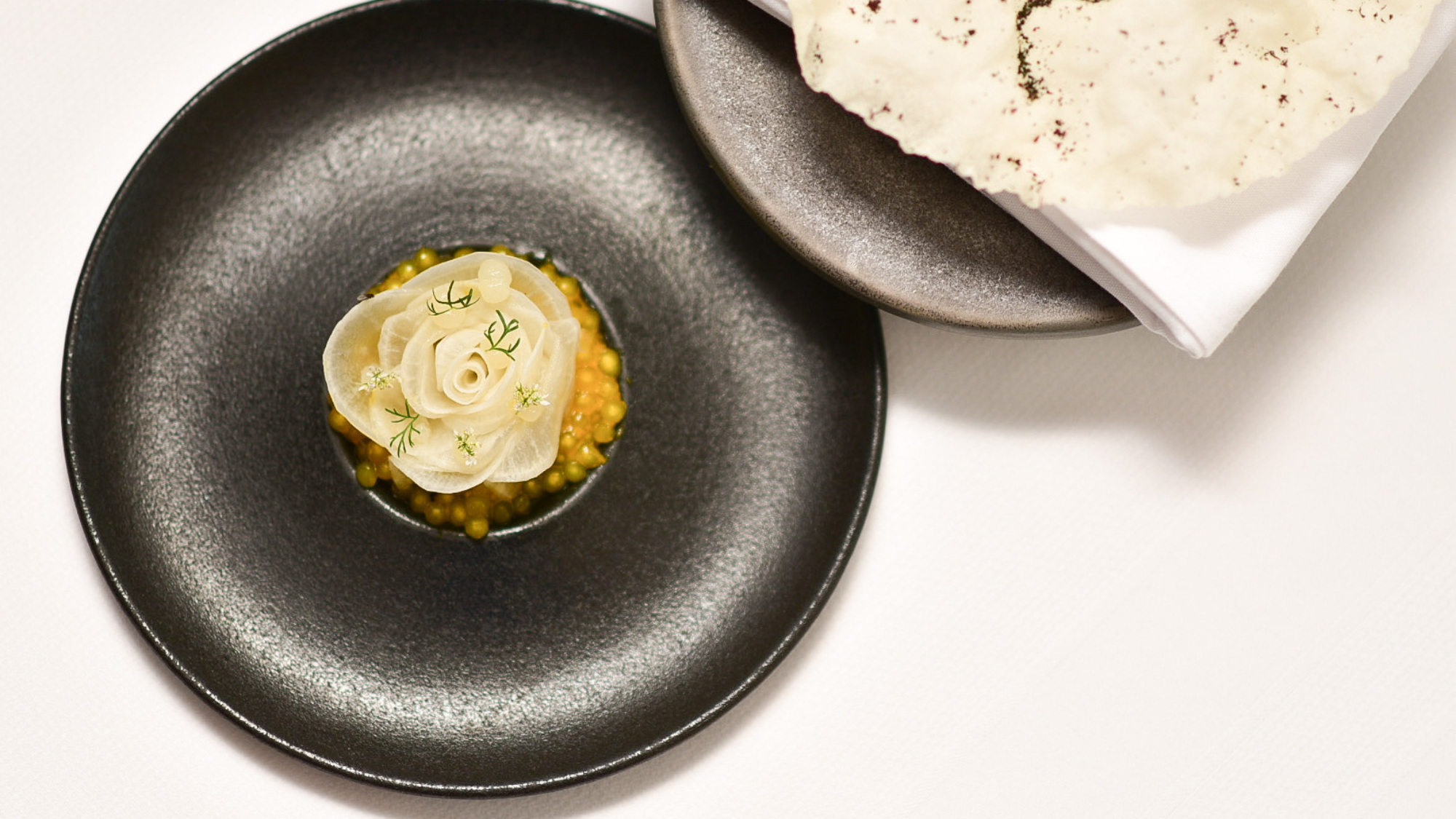
How Zero Builds Surprises Into Its Tasting Menu, in Five Dishes
You wouldn’t know it from the menu at , but longtime chef Vinson Petrillo is a self-described picky eater.
“We don’t believe in making weird food just to create buzz,” he says. “In every dish, taste has to be first — it has to be delicious, has to have a soul behind it. This is an expensive restaurant, so it can be intimidating for some folks, but it is meant to be a fun experience. And satisfying.”
Amazingly, Petrillo works out of a small 175-square-foot kitchen. Despite that, he and his team of just six chefs tuck a large amount of delicious surprises throughout a 12-dish tasting menu. They might be texture surprises, taste elements that change with each bite, or trompe l’oeil style illusions, but each dish offers a discovery element for the diner. Although we don’t necessarily want the “spoiler alert” moniker, we wanted to invite you into the kitchen for a peek behind the plate to learn what goes into that wow moment for five of the restaurant’s courses.
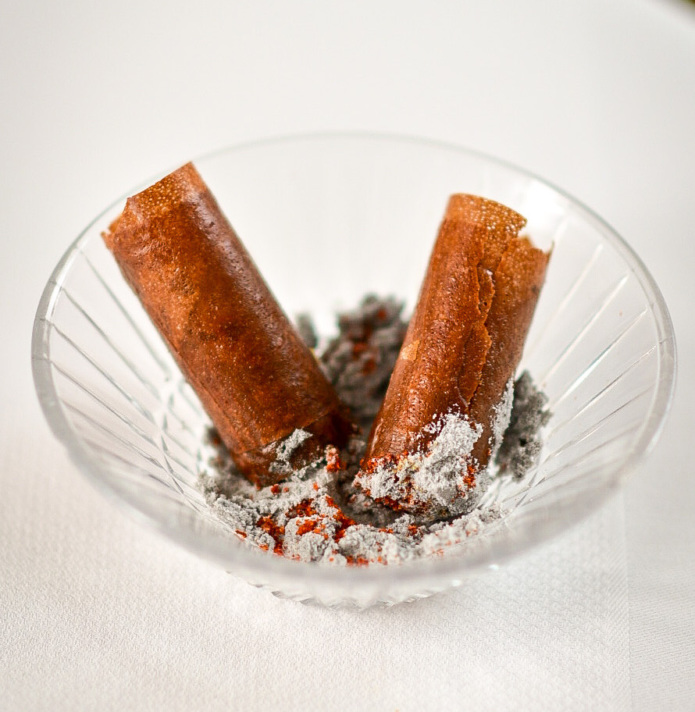
1. Cigar
There is always a beef dish on Zero’s menu, and since the kitchen only plates the prime tenderloin for that, there are always prime leftovers, too good not to showcase. So the kitchen team transforms them into “tobacco,” as in the classic Southern crop, to fill a feuilles de brick pastry tube. The beef is chopped and mixed in a Japanese-style tartare, which is sans mayonnaise but instead includes house XO Sauce (a vegan mix of ginger, Thai chiles, truffle scraps, vegetables, and hours on the stove) as the binding agent, along with some shallot and capers.
Then, for presentation in a glass ashtray, each cigar is dipped in a powdered mix of smoked mushrooms, brown butter, and a little activated charcoal for color. “We don’t have silverware on the table, so diners are forced to pick it up,” Petrillo says. “A lot of people come here and don’t know what to expect, so we start with this to illustrate the fun tone of the meal.” And delicious, as the umami bite of the cigar is meaty, mushroom-y, and salty.

2. Foienut
Another of the rotating snacks at the beginning of the tasting menu, the foienut is a way for the chef to simultaneously delight guests and invite them to see the meal that’s about to unfold as fun. It’s also a way to work a luxury ingredient into the experience and reference an iconic Southern staple — the peanut.
Pure grade A foie gras is cured with salt, sugar, white pepper, and Cognac, then melted and blended back together to create a smooth paste. Then that paste is used to fill custom peanut molds from Mold Brothers, and the result is so lifelike when served atop real in-the-shell peanuts that Petrillo had to start marking the special treat with a dot of preserved prickly pear in order to distinguish the molded from the natural.
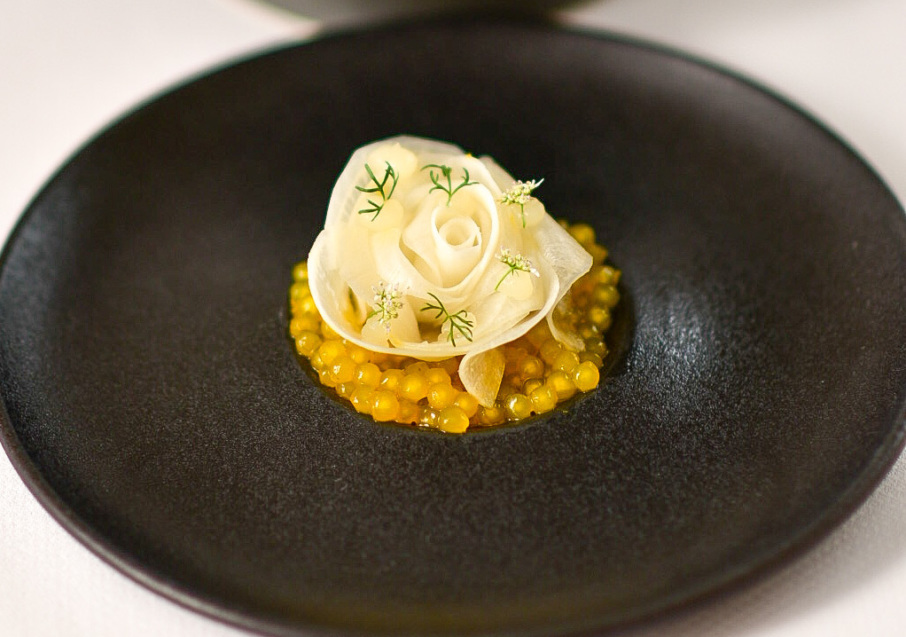
3. White Rose
“There’s a lot more to this dish than it looks like, and really, that’s true for most of our dishes,” he says. Petrillo and his wife have white roses growing in their yard at home, and one day, their six-year-old daughter looked at one and said, “Daddy, you should make a rose at work.”
“We’re not the first to do a rose on the plate, of course,” he explains, “but we really want this one to be lifelike.” The rose is built petal-by-petal with daikon petals flavored with dashi that are each a slightly different size. Each bite reveals different flavors — lime, white soy, and yuzu — that accompany the hamachi. “Ultimately, this comes down to a piece of sushi. Each bite is supposed to be a discovery. I don’t like one-dimensional, where everything is the same.”
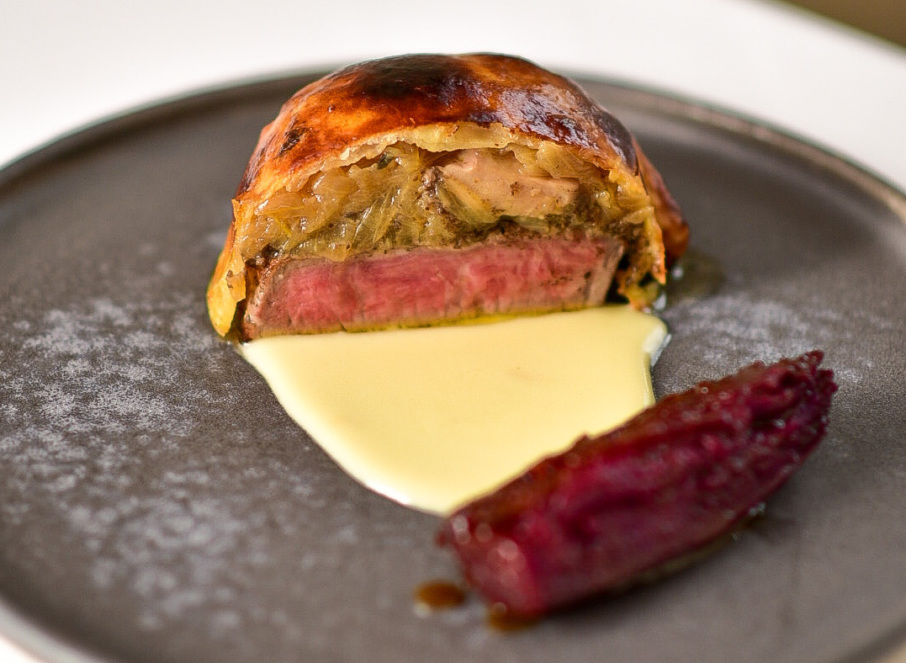
4. Beef Wellington
A classic dish that the chef first learned to make while a sous chef in Nantucket, the surprise — more foie gras — is tucked right under the incredibly flaky crust. It melts and acts as a creamy glue to hold the pastry and the beef together through a knife cut.
“The timing of this dish has to be perfect,” he says, as the pastry must be crisp, the foie creamy and melted, and yet the beef not overcooked. A prime center cut, the beef is a tender, juicy, and satisfying bite.
Significant time is invested in making the purple potato on the side. It’s first poached in Champagne and honey, then dehydrated, massaged until the skin is chewy, and then fried and served with butter. It’s meat and potatoes, essentially, “and it’s really fun to end the savory part of the meal with something that’s a reimagined classic.”
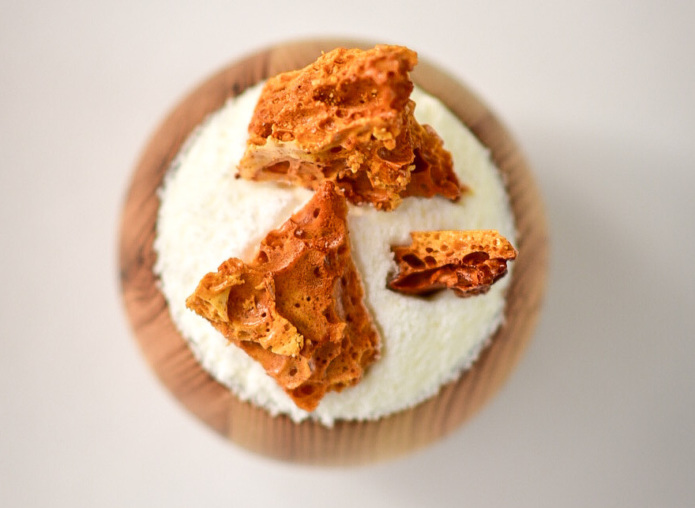
5. Tres Leches
Both the Beef Wellington and this dish made their debut on the restaurant’s ever-changing menu early, but they have been constants ever since. “This isn’t classic by any means, but if you take a bite of this cake, and think about a Twinkie, the flavors are very similar.” In order to achieve that comforting, sweet flavor comparison, Petrillo begins with honey from local purveyor Bee City, then makes a light, crunchy brittle with it during the process, coaxing out flavors of toasted marshmallow.
The cake is then soaked in young coconut milk, topped with freeze-dried coconut, and served in a specially made coconut dish. “All of the dishes are based on texture, and this one is a good example of that,” Petrillo says. The surprise is that the dessert is the opposite of the texture of a Twinkie or the saturated cake of Tres Leches, but comparable in flavor to both, with contrasting textures of crunch and coconut.

